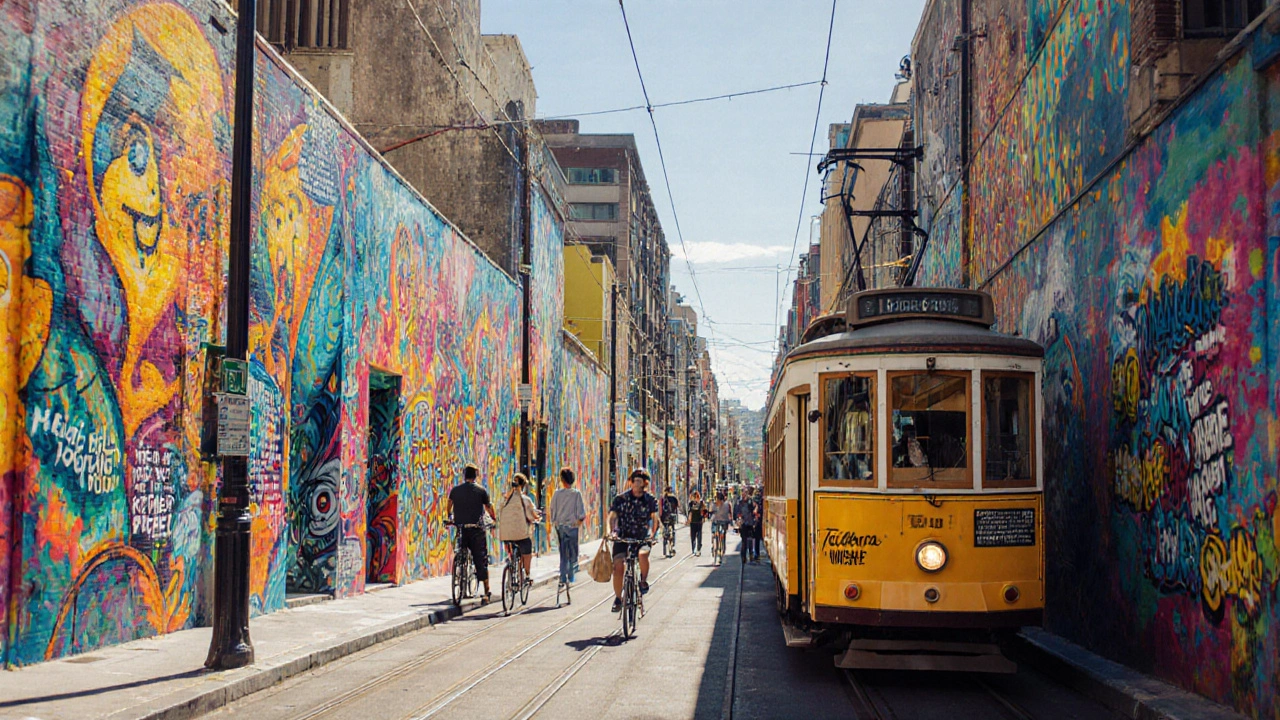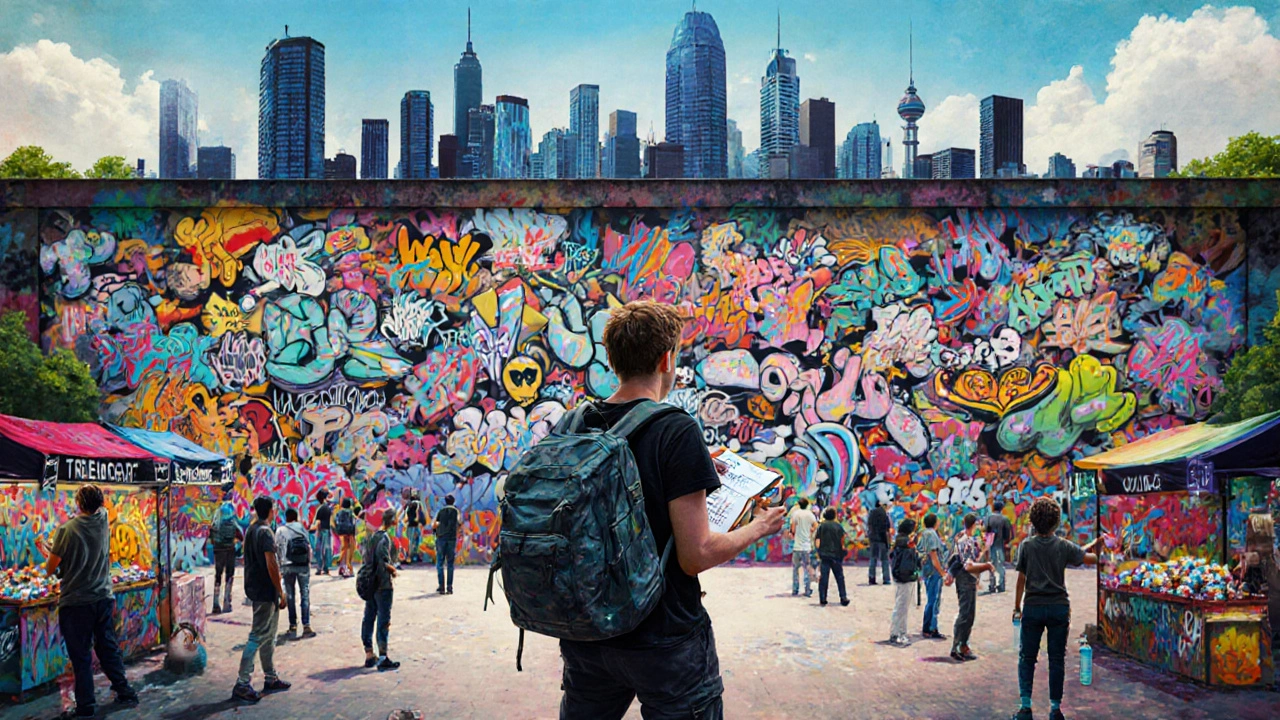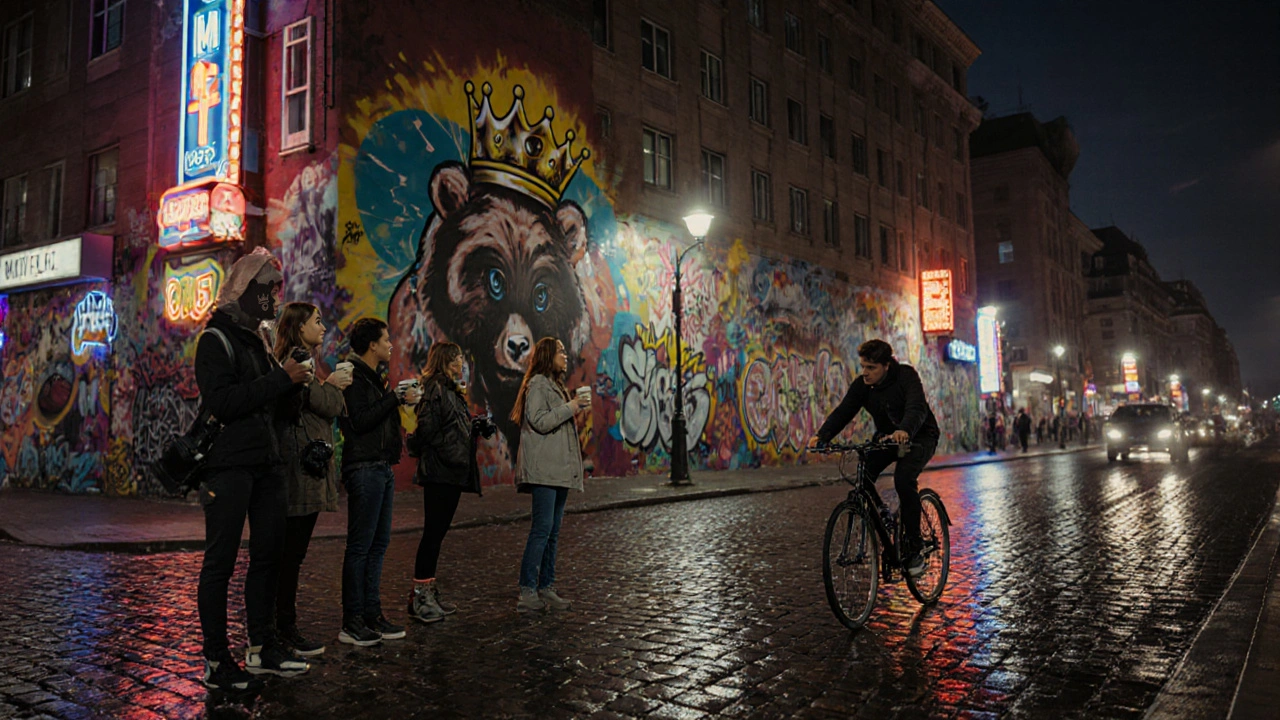Street Art City Explorer
Find the perfect street art destination based on your preferences!
Recommended City:
Street Art City is a urban destination celebrated for its vibrant graffiti, murals, and public‑art programs that draws cultural tourists, photographers, and locals alike. If you’ve ever wondered where to see the most eye‑catching pieces, this guide maps out the best cities around the globe, breaks down their signature styles, and offers practical tips for an unforgettable street‑art crawl.
Why Street Art Cities Matter
Street art is more than colorful spray paint; it’s a living archive of a city’s social pulse. graffiti originates from DIY subcultures and often serves as political commentary, while murals are large‑scale works commissioned by municipalities or community groups can transform neglected neighborhoods into cultural landmarks. This mix fuels cultural tourism travel driven by interest in heritage, arts, and local experiences, an industry worth over $1 trillion globally (UNWTO 2023). Understanding the ecosystems behind street‑art hotspots helps travelers choose cities that match their vibe-whether it’s raw political tags or polished, city‑commissioned masterpieces.
North America Highlights
In the United States, Miami hosts the annual Art Basel and Wynwood Walls, a 1.8‑acre outdoor gallery that blends commercial galleries with street‑level expression. The Wynwood district boasts over 400 murals, making it a launchpad for emerging artists. Further north, Philadelphia features the Mural Arts Program, the nation’s largest public‑art initiative, with more than 3,600 murals across neighborhoods.
- Key style: bright neon palettes, pop‑culture references.
- Best spots: Wynwood Walls (Miami), The Mural Mile (Philadelphia).
- Must‑see event: Art Basel Miami Beach (December).
South America Highlights
South America bursts with politically charged pieces. Bogotá hosts the vibrant street‑art corridor of La Candelaria, where local collectives paint stories of social change. The city’s artist collectives like Taller 2Co operate as open workshops and community hubs keep the scene fresh. Further south, Lima has turned the historic Barranco district into an outdoor canvas, mixing colonial architecture with modern tags.
- Key style: bold political slogans, monochrome stencils.
- Best spots: La Candelaria (Bogotá), Barranco (Lima).
- Must‑see event: Bogotá Graffiti Festival (August).
European Highlights
Europe offers a blend of historic and avant‑garde. The German capital Berlin is famed for its East Side Gallery, a 1.3‑km stretch of the Berlin Wall covered in murals. The city’s public art program Berlin Art Council funds yearly interventions in public spaces, ensuring fresh works appear constantly. In Portugal, Lisbon has turned the Alfama and Bairro Alto neighborhoods into mural highways, often featuring Portuguese tile patterns. Meanwhile, the UK’s Shoreditch in London serves as a laboratory for emerging British artists, where legal walls change weekly.
- Key style: large‑scale narratives, mixed media installations.
- Best spots: East Side Gallery (Berlin), Rua da Palma (Lisbon), Brick Lane (London).
- Must‑see event: Up‑West Festival (Berlin, May).

Asia, Africa & Oceania Highlights
Across the southern hemisphere, Melbourne hosts the famous laneway scene, where hidden alleys showcase ever‑evolving stencil art. The city’s Street Art Festival Melbourne Street Art Fair (October) attracts over 30,000 visitors. In Africa, Johannesburg features the vibrant Maboneng Precinct, where local collectives blend African motifs with contemporary graffiti. Meanwhile, Asian hub Bangkok is known for its hidden rooftop murals and the annual Bangkok Street Art Festival, which showcases Southeast Asian talent.
- Key style: cultural mash‑ups, rooftop installations, kinetic art.
- Best spots: Hosier Lane (Melbourne), Maboneng (Johannesburg), Charoen Krung (Bangkok).
- Must‑see event: Melbourne Street Art Fair (October).
Quick Comparison of Top Street Art Cities
| City | Signature Area | Typical Style | Annual Festival |
|---|---|---|---|
| Berlin | East Side Gallery | Large‑scale narrative murals | Up‑West Festival (May) |
| Melbourne | Hosier Lane | Stencil & wheat‑paste | Melbourne Street Art Fair (Oct) |
| Bogotá | La Candelaria | Political stencils | Bogotá Graffiti Festival (Aug) |
| Lisbon | Alfama & Bairro Alto | Tile‑inspired murals | Lisbon Urban Art Fest (June) |
| Johannesburg | Maboneng Precinct | African motif graffiti | Johannesburg Street Art Expo (Sept) |
Planning Your Street‑Art Adventure
Turn your wanderlust into a focused itinerary with these steps:
- Identify the city’s signature area the neighbourhood where most murals cluster. Most guidebooks list a “must‑see” district.
- Check the calendar for a street‑art festival that often includes live painting and artist talks. Festivals boost the number of fresh works and give you chances to meet creators.
- Book a local guided walking tour led by curators who can decode symbolism. Expect 2-3 hours of walking, plus insider stories.
- Pack light, bring a reusable water bottle, and wear comfortable shoes-most murals are found on foot, up staircases, or on rooftops.
- Respect the art: don’t touch, don’t spray‑paint, and follow any posted signage. In many cities, destroying a mural can carry heavy fines.
Related Concepts Worth Exploring
Street art doesn’t exist in a vacuum. Here are three adjacent ideas that deepen your appreciation:
- artist collectives groups of creators who share resources and curate large‑scale projects, such as Berlin’s “Die Wand” or Melbourne’s “Graffitire”.
- public art programs municipal initiatives that fund murals, sculptures, and community workshops, exemplified by the Philadelphia Mural Arts Program.
- street‑art festivals annual events that showcase live painting, panel discussions, and market stalls, like the Up‑West Festival in Berlin or the Bogotá Graffiti Festival.
Beyond the Walls: How Street Art Shapes Cities
Research from the University of Arts London (2022) shows neighborhoods with active mural programs experience a 12‑percent rise in foot traffic and a 7‑percent boost in local business revenue within two years. Moreover, a UNESCO report (2023) notes that street art can revitalize derelict districts, turning them into cultural districts that attract both tourists and residents. In short, the street art cities you visit are often catalysts for broader urban renewal.

Frequently Asked Questions
Which city has the most murals per square kilometre?
Melbourne tops the list, especially in the laneway network where you can find up to 150 murals within a 2‑km² area.
Are street‑art tours safe for solo travelers?
Yes. Most major cities offer day‑time walking tours led by locals. Night tours exist in Berlin and Miami, but they usually stay in well‑lit districts and have group sizes of 6‑10.
Do I need permission to photograph murals?
Generally, public murals can be photographed for personal use. Commercial shoots often require a permit from the city’s cultural department or the artist directly.
What’s the best time of year to visit street‑art festivals?
Late spring to early autumn is ideal. Berlin’s Up‑West (May), Bogotá Graffiti Festival (August), and Melbourne Street Art Fair (October) all fall in this window, offering pleasant weather and packed program line‑ups.
Can I buy original works directly from street artists?
Many artists sell limited prints, stickers, or even commission pieces on the spot. Look for QR codes on murals or visit nearby pop‑up galleries that showcase their work.



